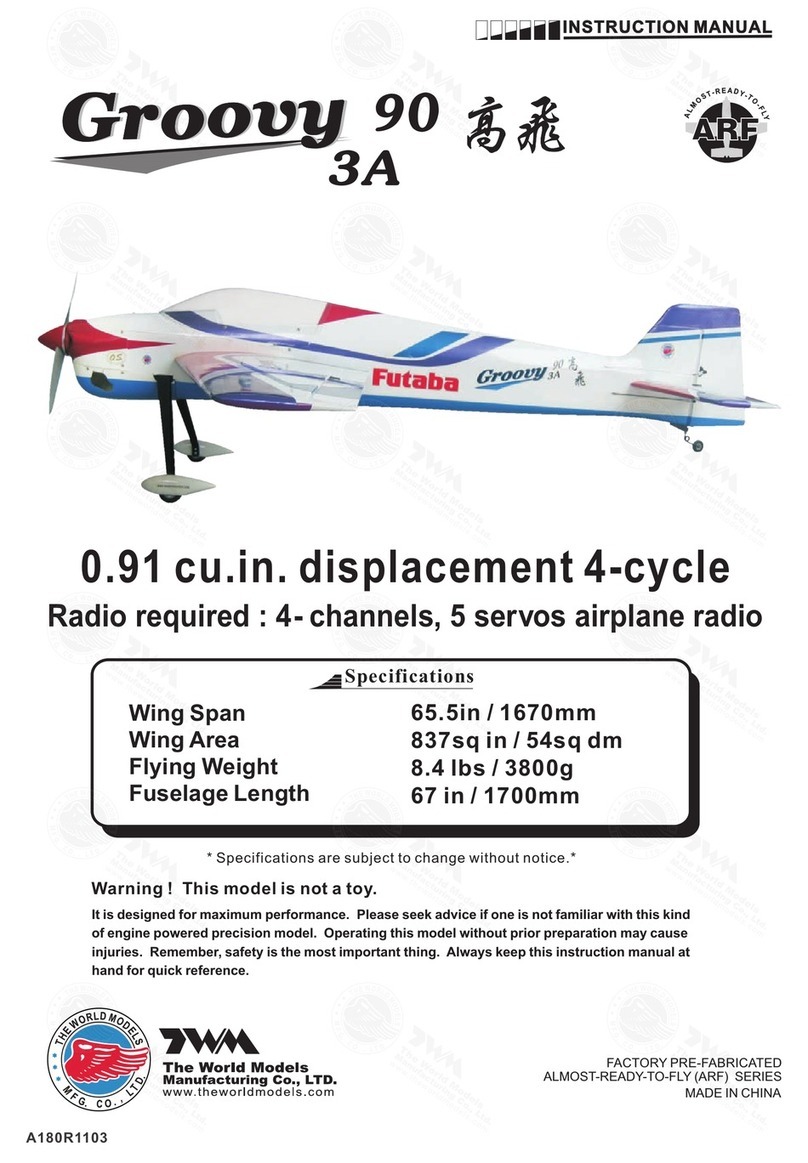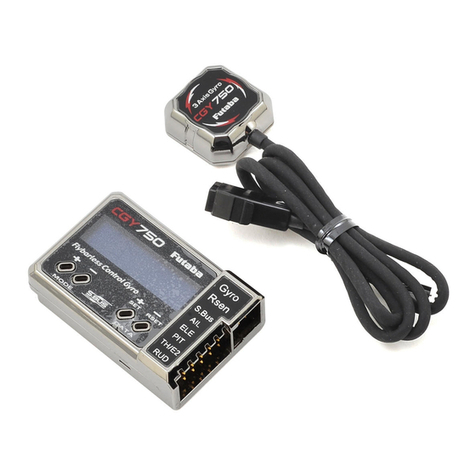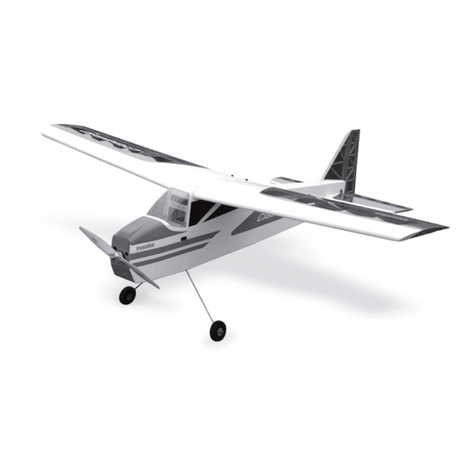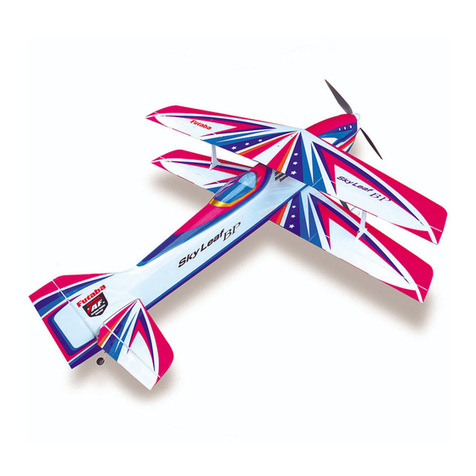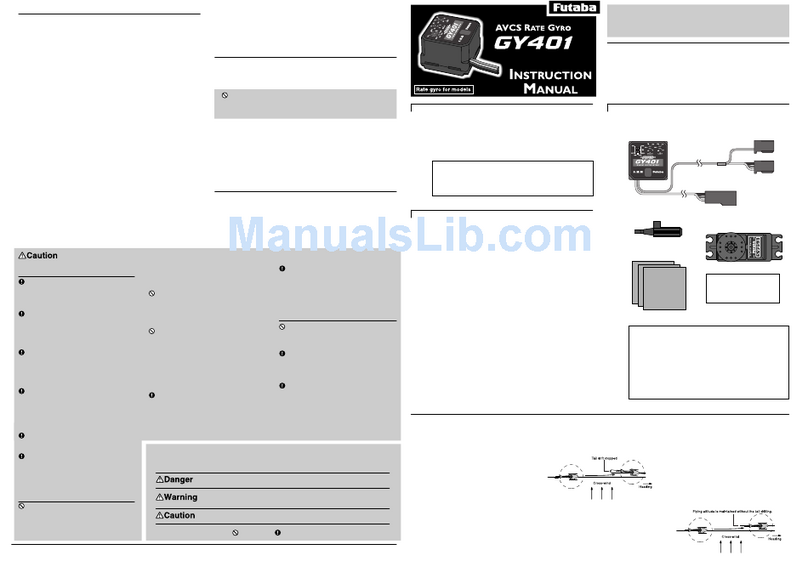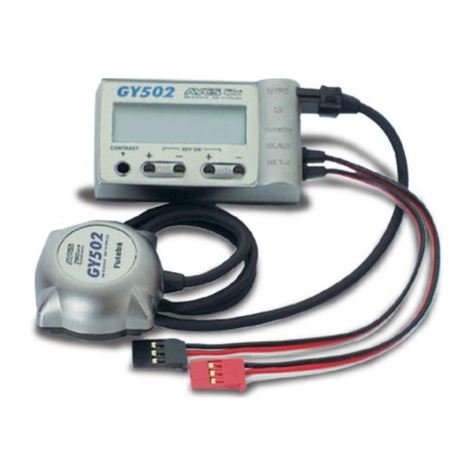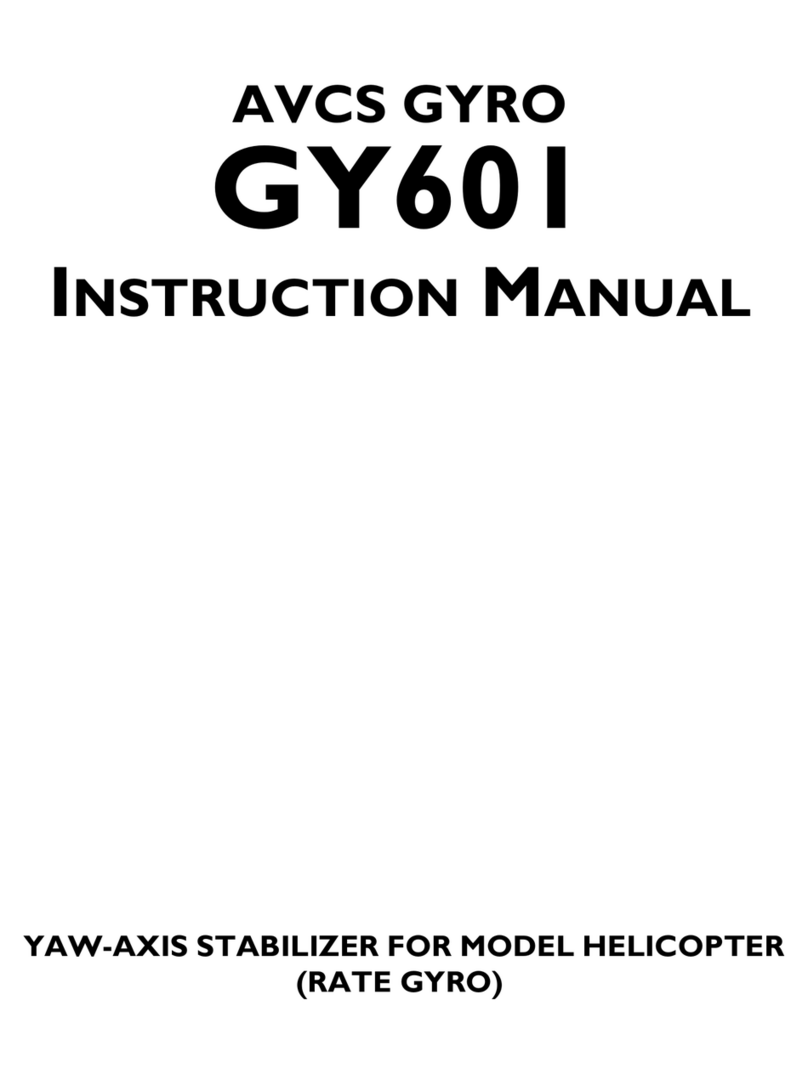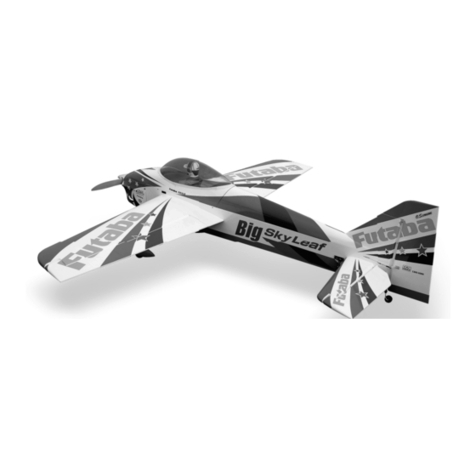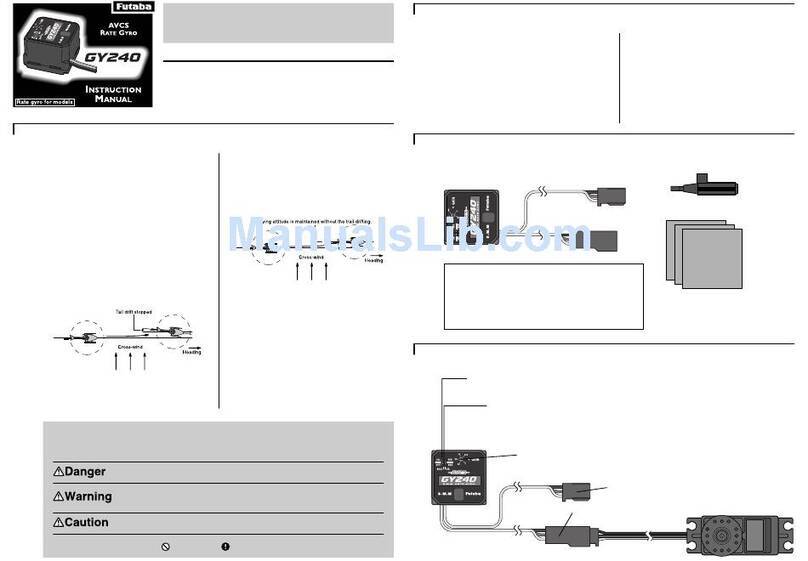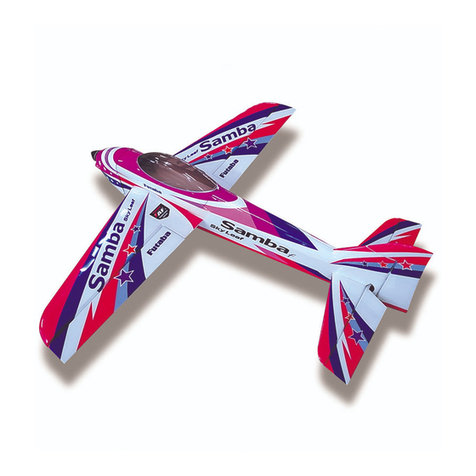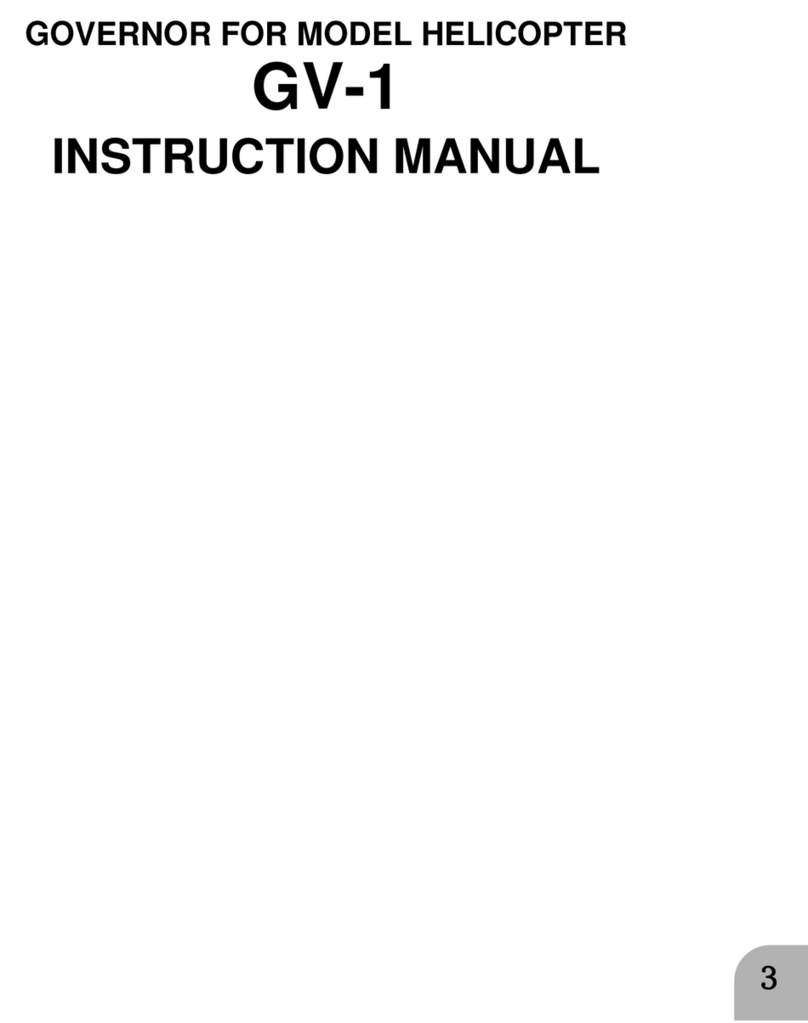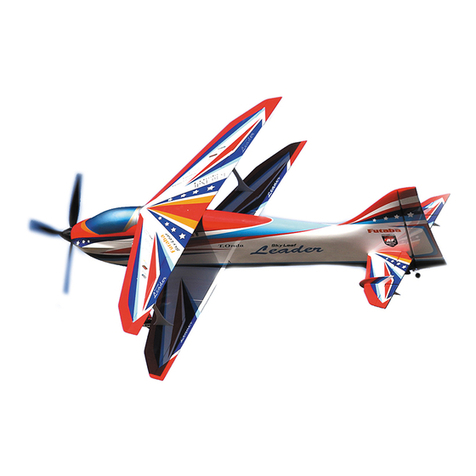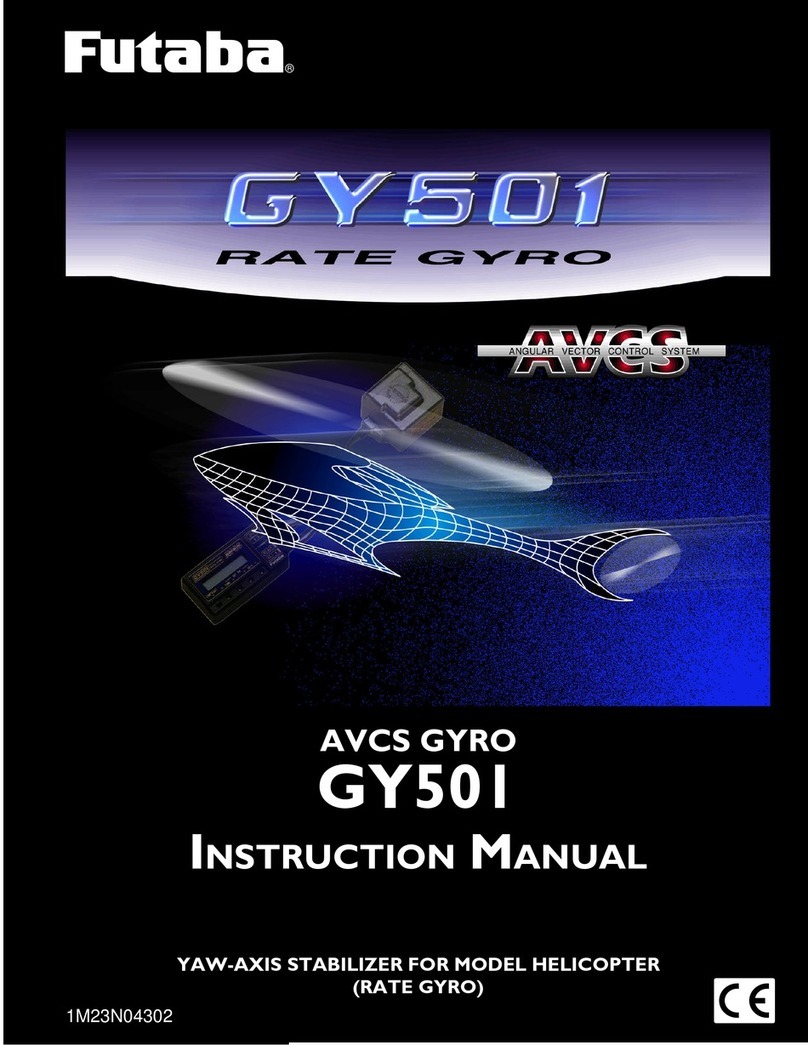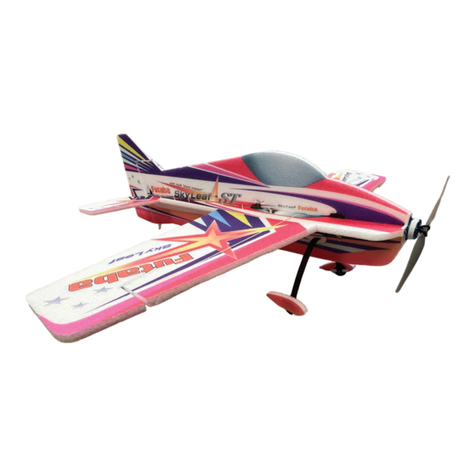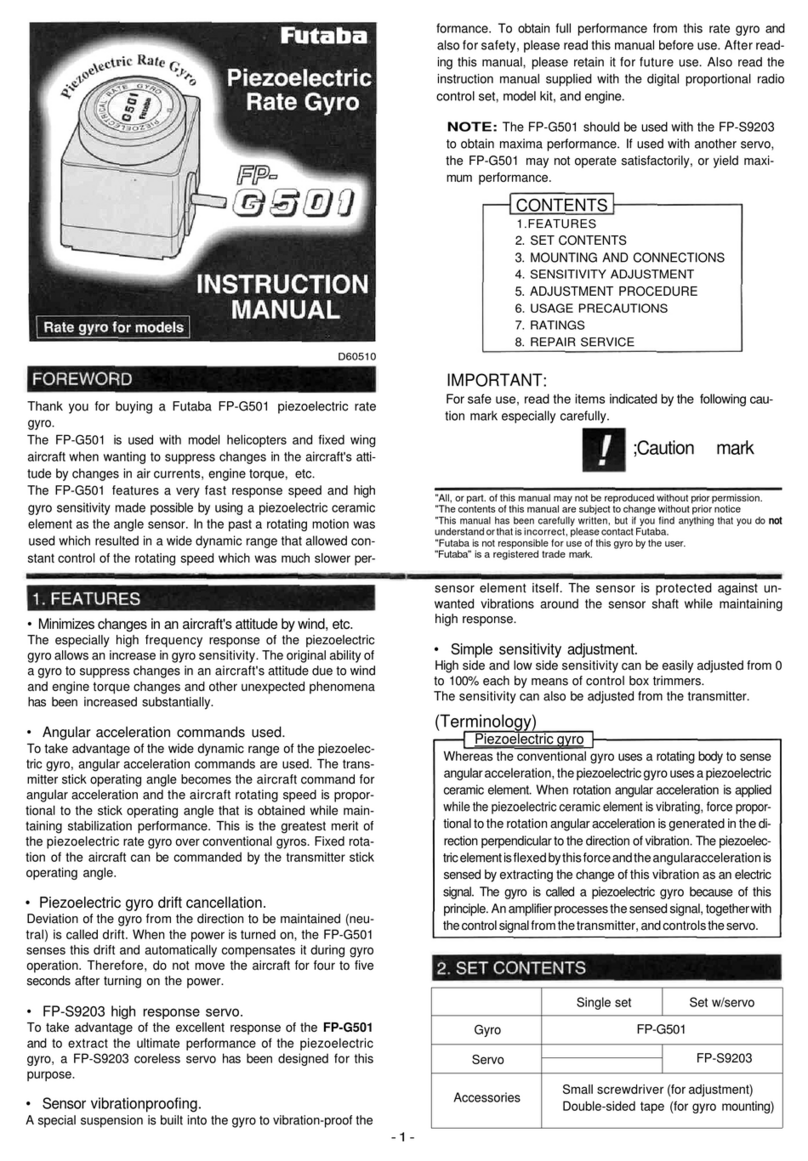Repair Service
Before requesting repair, read this instruction
manual again and recheck your system. Should the
problem continue, request repair service as follows:
Describe the problem in as much detail as possible
and send it with a detailed packing list together with
the parts that require service.
•
Symptom (Including when the problem occurred)
• System(Transmitter, Receiver, Servo's and
model numbers)
• Model (Model name)
• Model Numbers and Quantity
• Your Name, Address, and Telephone Number.
If you have any questions regarding this product,
please consult your local hobby dealer or contact the
Futaba Service Center.
FUTABA CORPORATION Phone: (043) 296-5118 Facsimile: (043) 296-5124
Makuhari Techno Garden Bldg., B6F 1-3 Nakase, Mihama-ku, Chiba 261-8555, Japan
©FUTABA CORPORATION 2005, 7
This section describes how to use the G190.
Mount and adjust the G190 as described below.
Mounting Precautions
Always use the attached sensor tape to
mount the G190.
* The purposes are not only to fi x the gyro fi rmly to the
fuselage but also to prevent unnecessary vibrations of
the fuselage from traveling directly to the gyro.
When mounting the G190, leave a small
margin so that the gyro connection cable is
not stretched tight.
* If the cable is stretched tight, the gyro will not display
top performance. If the gyro is dislodged, the gyro may
malfunction and is very dangerous.
Mount the G190 and receiver as far away as
possible from the drive motor and ESC.
* The drive motor and ESC generate strong electromag-
netic noise. This noise may interfere with the gyro/re-
ceiver and cause erroneous operation.
Insert the connectors fully and fi rmly.
* If vibration, etc. causes a connector to work loose dur-
ing fl ight, the heli may crash.
Always check the direction of operation of
the servos.
* If you attempt to fl y the model when a servo operates
in the wrong direction, the fuselage will spin in a fi xed
direction.
Operating Precautions
When turning on the power, do not move the
fuselage until the LED monitor starts to light
continuously after quick blinking.
* It will automatically start initialization procedure of the
gyro sensor.
Avoid sudden temperature changes.
Initial adjustment
4
Temporarily set the trimmer of the gyro's
sensitivity approximately at 75%.
• First, turn the trimmer fully
clockwise. At this time, the
position at which the trim-
mer cuts in is the 100%
position. Set the cut-in po-
sition to the 75% position.
*Carry out the further tuning later while flying
your helicopter.
When turning on the power
5
Pull throttle stick to idle position. Turn on
the transmitter power and then the gyro
(receiver) power in the proper sequence.
* Sudden temperature changes will cause the G190's
reference point to change. For example, in the winter,
do not fl y immediately after removing the model from
inside a heated car and in the summer, do not fl y im-
mediately after removing the model from inside an air
conditioned car. Allow the model to stand for about 10
minutes and turn on the power after the temperature
inside the gyro has stabilized. Also, if the gyro is ex-
posed to direct sunlight, the temperature may change
suddenly. Take suitable measures so that the gyro is
not exposed to direct sunlight.
Fuselage Maintenance Precautions
Always perform proper maintenance for ulti-
mate performance.
* Make the fuselage vibration as small as possible. Fuse-
lage vibration has an adverse affect on gyro operation.
Do not drop or apply any strong shocks to
G190.
* G190 contains precision parts in its inside such as a
gyro sensor. A strong shock may lead to the failure of
the G190.
Mountings and Adjustments
Trimmer Operation
• To make the G190 small and light-weight, a
small trimmer is also used. Be careful when op-
erating the trimmer. Always operate the trimmer
with the mini screwdriver supplied.
Mounting to Fuselage
1
Using the attached double-sided sponge
tape, attach the G190 temporarily to
the gyro-bed of a helicopter or a specified
place. And be sure that the G190 should be
mounted so that the direction of the G190
case is parallel to the main rotor shaft of the
helicopter (perpendicular to the tailpipe).
* Only required here is a temporary attachment
as the fi nal bonding on the correct direction will
be made after confi rmation of the direction.
• Always use the at-
tached double-sided
sponge tape.
• Cut it a little larger than
the attachment surface
of the G190.
• Ma k e su r e t h a t th e
surface of the fuselage
on which you mount the
gyro is wider than the
corresponding surface
of the gyro.
In case of mounted
to gyro-bed
In case of mounted
to main-frame
2
Connect the G190 rudder servo
connector to the rudder servo and the
G190 rudder input connector to the receiver
rudder channel connector.
3
Install the rudder servo and tail
control wire linkage and servo horn in
accordance with the helicopter instruction
manual.
* For the gyro to display top performance, it
must be linked at a position at which the servo
horn and control wire are perpendicular at the
rudder neutral position.
Control wire
Perpendicular
• Set the length of the
servo horn based on
the model manufac-
turer's instructions.
Initialization of G190
• When G190 is turned on, it will automatically
start initialization procedure of its gyro sensor
by reading the reference point. So, do not move
the aircraft until the LED monitor starts to light
continuously after quick blinking.
• Please note that initialization won't be carried
out properly and the LED monitor won't stop
blinking if G190 is used under considerable vi-
bration.
Rudder servo direction
6
Try moving the rudder stick to the left
and right, and check the direction of
operation of the rudder servo. If the rudder
servo moves in the opposite direction, use
the transmitter reverse function to reverse it.
Gyro operation direction
7 If the rudder servo moves to the left
when the nose of the helicopter turned
to the right, the gyro direction is correct. If
the servo moves in the opposite direction,
reverse the gyro upside down.
* If you try to fl y the helicopter while the gyro
operation direction is wrong, the nose will
swing to the right or left.
8
Firmly fix the gyro after the gyro
operation direction is determined.
Flying Adjustment
9
Lift off and hover, then adjust the rudder
neutral position with the transmitter trim lever.
*For large deviation, use the fuselage linkage to
adjust the rudder neutral position.
10
Adjust the gyro sensitivity to just before
the helicopter tail starts to hunt.
*When hunting occurs, set to a lower value.
*Adjust the sensitivity gradually while checking
for hunting.
<Servo Horn>: The gyro sensitivity also changes
with the length of the servo horn. If the sensi-
tivity is too low, lengthen the servo horn. Con-
versely, when hunting does not stop, shorten the
servo horn.
<Mixing>: Where necessary, use the transmit-
ter's revolution mixing (pitch to rudder mixing).
Caution: Please note that the aircraft may be-
come unstable in its behavior and blunt in re-
sponding to the gyro signal when the driving bat-
tery is low.
Precautions
